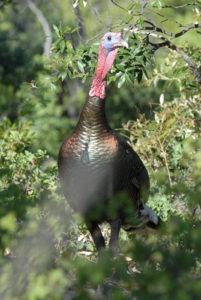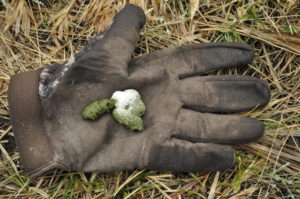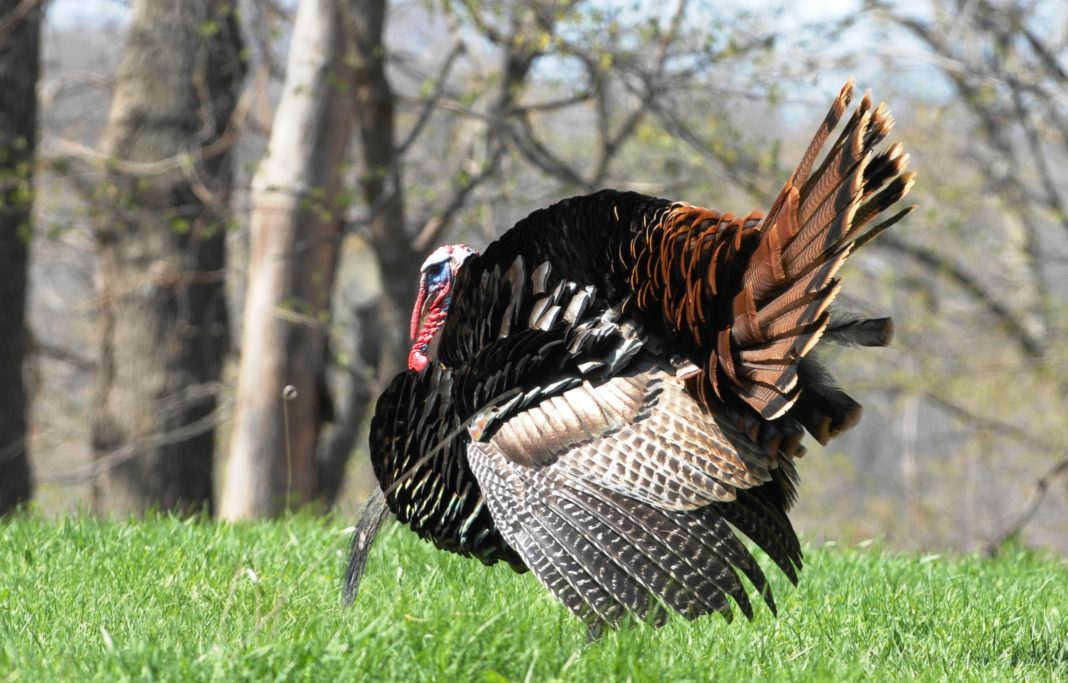Turkey Hunting Tactics: How to Hunt Turkey Scrapes
Every hunter dreams of encountering a fresh scrape. It’s like finding a treasure map left by the wildlife you’re pursuing. When you stumble upon freshly disturbed ground with a licking branch overhead, it’s a tellt
ale sign that a deer has been around. Similarly, when you discover scrape marks in soft soil, particularly in open fields or roadways, you can be confident a turkey has been strutting there, and the likelihood of its return is high.
Unveiling Turkey Strutting Zones
The resonating gobble of a spring tom turkey serves a primary purpose: to attract females. Similar to the calls of other bird species, this is a turkey’s love song. Turkeys, being non-monogamous, will see one tom breed with multiple hens. On a hunting trip in Florida, I had the opportunity to witness this fascinating behavior firsthand. A gobbler stood proudly in the middle of a small clearing, breeding with several females. In between his mating sessions, the bird strutted and gobbled, leaving unmistakable scrape marks in the sandy Florida soil.
Where to Spot Turkey Scrapes
Finding scrape marks and droppings, like that of a large gobbler stool, is a good indication of a strut zone. Scouting turkey habitats is an effective way to discover these zones, though this tactic can stress local turkeys, making them more cautious as the spring season approaches. A smarter strategy is to use your ears. Turkeys typically gobble on the roost, fly down, and then move toward a spot where they can strut and gobble to attract hens. These locations often feature strut marks, excellent visibility, and a concentration of droppings and feathers. Remember, gobbler droppings are generally larger than hens and often exhibit a ‘j’ shape.
Walking along old logging roads can offer a quiet way to scout and cover a large area. If you hear a turkey gobbling in mid-morning, it’s likely in a strutting zone. Make a

mental note of that location and plan to revisit it in the early morning or early afternoon.
Patience: A Virtue of Successful Turkey Hunting
Often, strutting zones are not located near a roost tree, which means you might need to exercise patience. Allow the gobbler to leave its roost and make its way towards you. If the turkey is vocal, staying put will be more challenging than you initially think. However, for pressured toms that seldom gobble, this patience can lead to a successful encounter with the king of the hill.
When you hear a gobbler approaching the strut zone, resist the urge to call. Just prepare yourself; he’s on his way. If the gobbles fade into the distance, remain perfectly still and ready to shoot. If the tom doesn’t appear, make soft clucks on a slate caller—just enough to pique a tom’s interest. In quiet surroundings, a few clucks can reach a tom from a considerable distance, but you must be patient. Just like hunting over a deer scrape, the physical sign of the animal’s presence boosts confidence. Turkey scrapes are secret spots, so be patient and let the mag
ic unfold.
Turkey Scrapes: Not a One-Time Occurrence
Unlike deer scrapes, which are often created once by a deer on the move or at night when they’re out of reach, turkey scrapes should be monitored daily. Unless a predator or another hunter has disturbed the gobbler, it should make a regular appearance. Strut zones are rarely abandoned, so if you ex

perience a quiet day, consider searching for another.
Remember, successful turkey hunting hinges on understanding turkey behavior and recognizing the signs they leave behind.
By adhering to these turkey hunting tactics, you’re setting yourself up for a rewarding hunting experience. So, get out there, scout those turkey scrapes, and let the adventure begin. Happy hunting!
For local regulations, visit eRegualtions.com.
More on Identifying Turkeys by Their Droppings
While the sight of a wild turkey might be a thrill, evidence of their presence can often be found in more subtle forms – their droppings. For those with a keen eye, turkey droppings offer surprising insights. They are small, cylinder-shaped, with a diameter slightly larger than a penny, usually curling in one direction. The composition is fairly consistent, often containing visible vegetable remains and insect parts if fresh, but typically presenting a dark composition that crumbles easily when old and dry.
Here’s where it gets fascinating: you can discern a turkey’s sex from its droppings. A gobbler, or male turkey, leaves droppings that usually take the shape of a “J” or sometimes a question mark. On the other hand, a hen, or female turkey, leaves droppings that more closely resemble a spiral shape that is all in one pile. The size of the droppings can also hint at the bird’s age, with larger droppings indicating an older turkey.
In the world of hunting, knowledge is power, and the more you understand your prey, the better hunter you become. We hope this detailed exploration of turkey hunting tactics, particularly focusing on hunting turkey scrapes, has provided valuable insights to enhance your May turkey hunting experiences. From understanding turkey behavior to knowing how to identify their droppings, every piece of information brings you closer to a successful hunt. And remember, the hunt doesn’t end in the woods; it’s just the beginning of another journey – the culinary one. Be sure to visit our favorite simple recipe for wild turkey jalapeno poppers!



















![The Best Deer Camp Chili [VIDEO] Deer Chili Ingredients, Tomatoes, Chili Spices](/wp-content/uploads/2015/10/Deer-Chili-Deer-Camp-Recipe-218x150.jpg)
![How to Call Elk Early in the Season [VIDEO]](/wp-content/uploads/2016/08/byers003-218x150.jpg)




![Idiots Disturb Hunter: How Would You Have Handled It? [VIDEO]](/wp-content/uploads/2015/10/DSC00110-e1474487693878-100x70.jpg)
![Albino Buck Shocked to Shed His Antlers [VIDEO]](/wp-content/uploads/2015/10/AlbinoDeer-100x70.jpg)